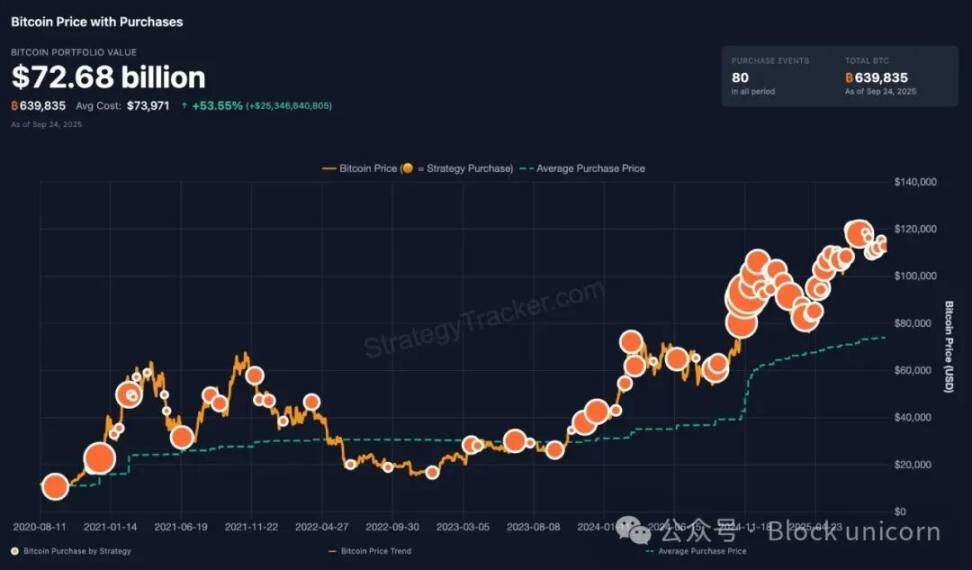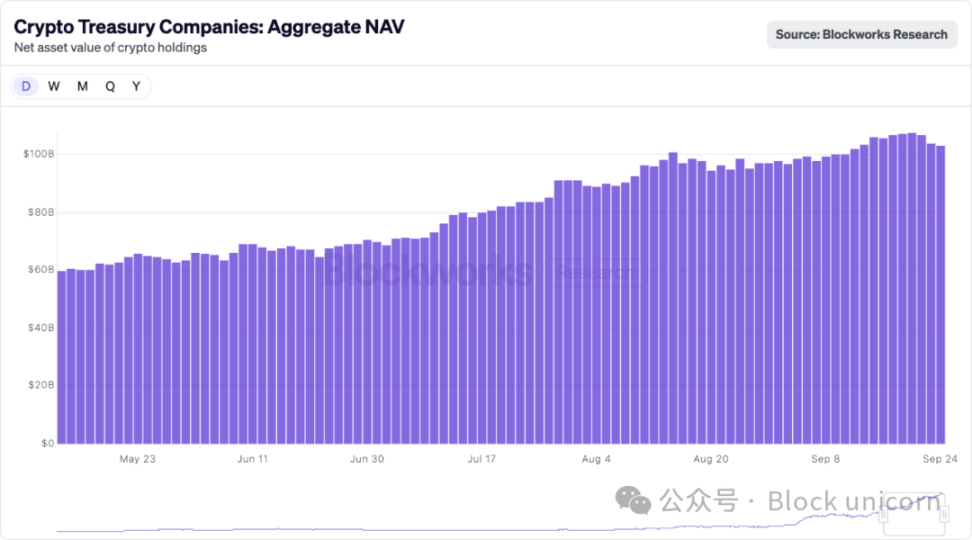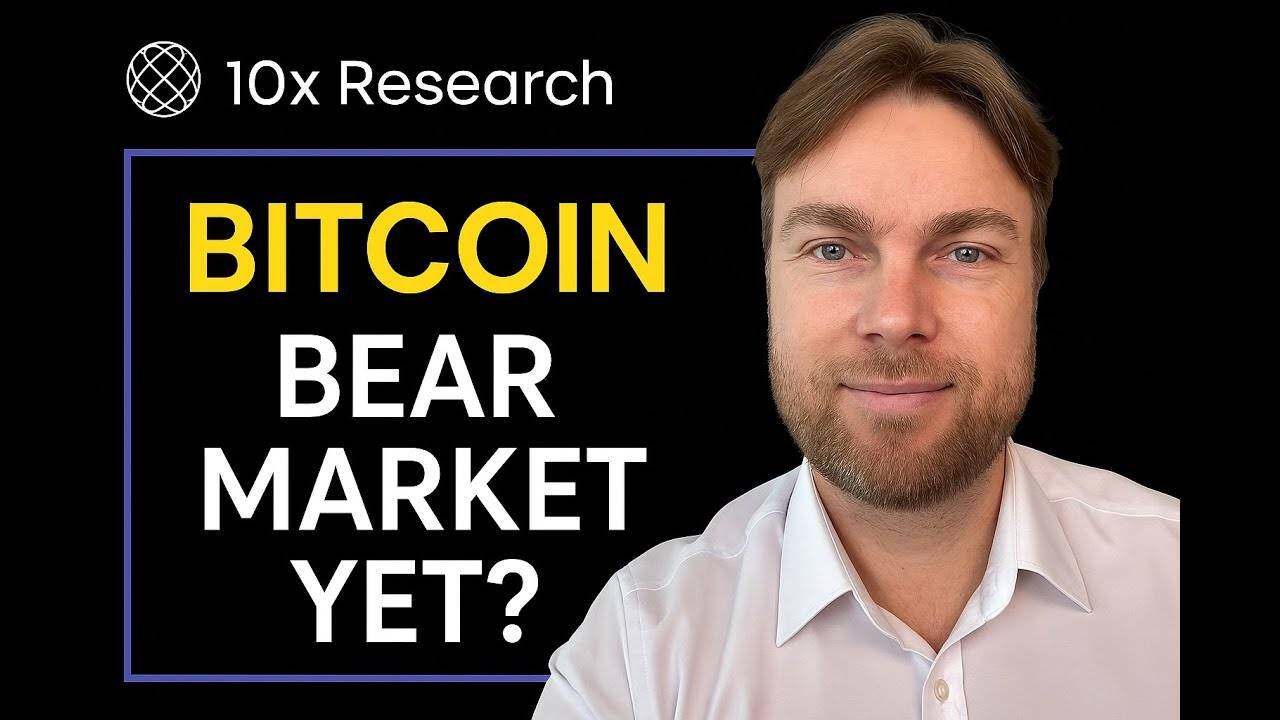The shattering of faith: The rise and fall of the DATCO model and the future of the crypto market
Original author: Thejaswini MA
Original translation: Block unicorn
Preface
Reality has a quirk that always manifests itself at the most inopportune moments.
Consider the nature of faith. It's not religious belief or political conviction, but something far stranger and more fundamental. It's the collective consensus that sustains civilization. We wake up each morning and pretend that colored paper has value, that invisible numbers in computer systems represent wealth, that companies are people, that people are consumers, and that consumers are rational actors making optimal choices.
These shared illusions are incredibly stable. They can persist for decades, even centuries, simply because we are willing to keep pretending. A dollar bill has value because we believe it has value. Stock prices reflect reality because we believe the market is rational. The system works precisely because everyone believes it works.
But faith is inherently fragile. It requires constant maintenance, like a garden or a marriage. If too much tending is neglected, weeds will grow. If too many assumptions are questioned, the entire structure will begin to crumble. When enough people stop believing simultaneously, reality will burst back like water through a crack in a dam.
The most interesting moments in financial history are not the formation of new beliefs. That happens gradually, almost imperceptibly. The truly interesting moments are the demise of old beliefs.
When the collective hypnosis was broken, everyone suddenly saw the emperor's naked body at the same time.
These moments reveal the arbitrariness of value itself, and the threads that hold our monetary fictions together.
Digital Asset Treasury (DAT) firms are undergoing a challenging transition as market dynamics that once favored them shift. These firms continue to operate, albeit in a different environment than the conditions that initially fueled their expansion.
For some time, the market has been under the illusion that Bitcoin would be more valuable if it were held in a publicly traded company rather than in a private wallet. This premium persists not for any logical reason, but simply because enough people believe it should exist.
What happens when shared financial dreams collide with the stubborn hardness of arithmetic? The answer is being written in real time, on balance sheets and M&A documents, in board rooms and trading floors, as entire industries grapple with the discrepancy between what the market is willing to pay and what assets are actually worth.
All this talk about belief vs. reality is really just my way of avoiding an obvious question: Why are syringe manufacturers and biotech companies finally turning to Bitcoin financial strategies?
Analysis of Financial Innovation
Digital Asset Reserve (DAT) companies represent a radical departure from traditional corporate structures. Unlike regular businesses that might hold some cryptocurrency as a side investment, a DAT company’s core business function is to accumulate and manage cryptocurrency.
The model works through what industry insiders call a "premium flywheel." When DAT shares trade above their net asset value (NAV), the company can issue shares at a premium and use the proceeds to purchase more cryptocurrency. Here's how it works:
Imagine a DAT company holds $200 million worth of Bitcoin. If the stock market values the entire company at $350 million, this would generate a 75% premium to its net asset value. This premium would become the engine of exponential growth for the company. The company could issue $50 million in new shares, which would dilute existing shareholders by approximately 14%. But here's the magic: that $50 million could purchase an additional $50 million in Bitcoin, bringing the company's cryptocurrency holdings to $250 million.
For existing shareholders, this is a accretive dilution. Yes, their percentage of the company has decreased, but the company now holds more Bitcoin per share than before the offering.
If you previously owned 1% of a company that held $200 million worth of Bitcoin, your shares would be backed by $2 million worth of Bitcoin (1% x $200 million = $2 million). After the dilutive stock issuance, you now own 0.86% of a company that holds $250 million worth of Bitcoin, meaning your shares would be backed by $2.15 million worth of Bitcoin (0.86% x $250 million = $2.15 million).
As this process repeats, the flywheel accelerates. If the market maintains the premium, the company can continue issuing shares at a premium to net asset value, purchasing more cryptocurrency and increasing each shareholder's exposure to the underlying cryptocurrency. The Strategy has perfected this approach, increasing its Bitcoin holdings from approximately 38,000 in 2020 to over 639,000 in 2025 through relentless execution of this flywheel mechanism.
The model assumes three key conditions: a persistent premium, a market that allows for frequent financing, and a generally upward trend in cryptocurrency prices. If any of these conditions are broken, the flywheel can reverse, leading to a vicious cycle where the company struggles to raise capital and may even be forced to sell assets to meet obligations.
Strategy (formerly MicroStrategy) has perfected the model, growing from 38,250 Bitcoin in August 2020 to 639,000 Bitcoin, worth $72 billion, in September 2025. The company currently controls approximately 3% of the total Bitcoin supply.

For investors, the appeal of DATs lies in the ability to gain regulated cryptocurrency exposure without having to worry about wallets, exchanges, or custody. For institutions prohibited from directly holding cryptocurrencies, DATs offer a compliant “backdoor” into the digital asset market through the familiar stock market.
upsurge
2025 marked the beginning of a DAT boom. Companies raised over $20 billion in new capital, transforming industries as diverse as biotech and toy manufacturers into cryptocurrency treasury managers. This market enthusiasm spawned some unusual combinations: a syringe manufacturer became a treasury manager for Solana, a cleaning products company switched to holding Dogecoin, and a health company began hoarding BONK tokens.

Several publicly traded cryptocurrency companies trade at significant premiums to their net asset values. MicroStrategy's stock price trades at a premium of approximately 75% to Bitcoin's net asset value.
Metaplanet, a Japanese company known as "Japan Strategy," is trading at a significant premium, reportedly approximately 384% above its Bitcoin net asset value, primarily due to investors valuing its growth prospects and access to capital markets. Smaller firm Blockchain Group is also trading at a premium exceeding 200%, reflecting speculative demand.
Listing a company on a stock exchange through a traditional IPO takes over a year. SPAC transactions could potentially reduce that time to six months. However, the window for premium valuations is rapidly closing, so companies are opting for the quickest path: reverse mergers of existing companies.
“If you don’t create an actual operating business beyond accumulating crypto assets, you’re going to be excluded from the Russell indexes,” explained analyst Paul McCaffery. This index exclusion can be fatal for companies that rely on trading above net asset value, as institutional buying requirements force companies to purchase approximately 17% of the free float upon joining the major indexes.
The result has been a series of questionable business mergers. For example, Sharps Technology, despite having zero revenue and a $2 million operating loss, transitioned to become a Solana DAT, and its accounting firm resigned due to the company "not meeting internal risk tolerance metrics." However, the new cryptocurrency-focused entity pledged to continue operating in the injector business, not because of strategic reasons, but because maintaining some operational activity was necessary for compliance.
A watershed moment was Strive's $1.34 billion acquisition of Semler Scientific in September 2025. This was a consolidation driven by survival.
Both companies' stock prices are trading near or below their net asset values, preventing them from raising further capital at attractive prices. By combining their Bitcoin holdings (5,886 BTC + 5,021 BTC), they hope to create sufficient scale to reignite trading premiums. The merger is essentially two drowning companies tying themselves together in the hope of swimming ashore.
The deal structure reveals a new reality: no significant premium, minimal synergies, and a focus on scale over growth. Is this a template for the coming wave of DATCO consolidation? Let's unpack this idea a bit.
When the music stops
The DATCO model contains several structural flaws that can become catastrophic when the market turns adverse.
Premium evaporation problem
The entire DATCO edifice is built on a stock premium that maintains net asset value (NAV). When those premiums disappear—as they will for most small DATCOs by 2025—the flywheel reverses.
Companies trading at or below net asset value face a stark choice: either issue dilutive shares, effectively lowering the price of each bitcoin, or stop growing altogether. Many companies have opted for a third option: borrowing money to buy back their own shares in an attempt to artificially maintain a premium.
Death spiral dynamics
When cryptocurrency prices fall and the premium evaporates, DATCO enters what analysts call a "death spiral." Here's how it works:
- Cryptocurrency pullback: Bitcoin/Ethereum prices fall 30-50%.
- Stock declines widen: DATCO shares fell 50-70% due to leverage.
- Premium Collapse: The stock price trades at a discount to the reduced net asset value.
- Funding crisis: Inability to raise equity capital without significant dilution.
- Debt stress: Convertible bonds and credit lines are under pressure.
- Forced selling: Companies liquidate cryptocurrencies to meet obligations.
- Knock-on effect: Forced selling further depresses cryptocurrency prices.
During the Bitcoin pullback in early 2025, several smaller DATCOs experienced similar declines, with their stock prices falling by over 60% as Bitcoin also fell by 40%. Metaplanet's stock price fell by over 60%, far exceeding Bitcoin's approximately 40% drop. Its stock price fell from approximately $457 in July 2025 to a low of $328.
The desperation of stock buybacks
Recent reports indicate that at least seven DATCO companies are borrowing money to fund share buybacks, suggesting the model is breaking down. Consider the implications of buybacks in this context. Instead of issuing new shares at a premium to purchase more cryptocurrency (the original flywheel mechanism), companies are borrowing against their cryptocurrency holdings to reduce their share count. ETHZilla borrowed $80 million against Ethereum to fund a $250 million buyback after its stock price plummeted 76%. Empery Digital raised $85 million in debt to finance its share buybacks. These are all defensive strategies.
This buyback strategy exposes three key issues. First, these companies no longer have access to the stock market on favorable terms. When your stock trades below net asset value, issuing new shares destroys value, not creates it. Second, management teams are effectively betting that financial engineering can restore a premium that was eliminated by fundamental market forces. Third, borrowing against volatile crypto assets to fund buybacks introduces new risks. If cryptocurrency prices decline while debt remains, companies could face forced liquidation.
M&A "musical chairs" game
The wave of consolidation demonstrated that the original DATCO rationale was no longer sustainable. Companies merged not because of compelling strategic synergies but because they needed scale to remain competitive in oversaturated markets.
If 200 companies all try to become a proxy for Bitcoin, the scarcity premium that underpinned the original model disappears. Consolidation may help, but it also reveals that many DATCOs are built on fundamentally flawed assumptions about a sustained market premium.

With increased regulatory scrutiny, the M&A process has become more complex. The U.S. Securities and Exchange Commission (SEC) is requiring more detailed disclosure of cryptocurrency holdings, valuation methodologies, and risk factors. Investment banks preparing fairness opinions must navigate the complexities of asset valuation, assessing synergies, justifying premiums within a net asset value (NAV)-based framework, and the impact of cryptocurrency volatility on deal certainty.
This regulatory focus makes M&A execution more challenging, but also potentially more credible, thereby reducing excessive speculation in early-stage DAT activity.
The Divergence Between Bitcoin and Ethereum
While Bitcoin DATs dominate the headlines, Ethereum-based financial firms are also developing in parallel, pursuing a different strategy. Ethereum’s Proof-of-Stake (PoS) consensus mechanism allows DATs to earn 3-5% annualized returns through staking, creating a revenue stream that goes beyond simple asset appreciation.
BitMine Immersion Technologies is a prime example of this strategy, holding over 2.4 million ETH, valued at approximately $9 billion and representing over 2% of the total Ethereum supply. The company actively stakes through institutional providers like Figment, earning consistent returns even when ETH prices remain flat.
SharpLink Gaming has adopted a similar strategy, holding 837,230 ETH, valued at $3.7 billion, with almost all of its holdings staked to maximize returns. This productive asset approach addresses a fundamental limitation of Bitcoin DATs: the inability to generate income from idle holdings through external lending or derivatives strategies.
SharpLink Gaming has adopted a similar strategy, holding 837,230 ETH worth $3.7 billion, almost all of which is staked to maximize returns. This productive asset strategy addresses a fundamental limitation of Bitcoin DATs: the inability to generate income from idle assets without external lending or derivative strategies.
Ethereum's treasury model also benefits from the blockchain's expanding decentralized finance (DeFi) ecosystem. Businesses can participate in lending protocols, provide liquidity on decentralized exchanges, or invest in tokenized real-world assets, all while maintaining their core ETH reserves.
However, Ethereum strategies also come with additional risks.
Staking involves technical complexity and potential slashing risks. Participating in DeFi introduces smart contract risks and regulatory uncertainty. The trade-off between Bitcoin's simplicity and Ethereum's efficiency has given rise to different DAT models pursuing different risk-return profiles.
The weight of numbers
In the end, math always wins out, not because numbers are more real than stories, but because numbers are harder to ignore when stories no longer make sense.
The DAT phenomenon promised to transcend the age-old opposition between narrative and arithmetic. It created a world where belief could truly embody value, where collective trust in a corporate structure could multiply the value of the assets it contained. For a brief, intoxicating moment, the market seemed to have discovered a new financial alchemy, transforming belief into capital through the sheer power of shared imagination.
Yet, market forces will eventually reassert themselves. Water freezes at 0 degrees Celsius, regardless of how we perceive ice. Gravity pulls objects toward the ground, regardless of whether we accept Newton's laws. Ultimately, a company's valuation will reflect its fundamentals, not the stories we create about its specialness.
The challenge arises when everyone shares the same beautiful dream. The dream loses its ability to differentiate. When fifty companies offer similar Bitcoin exposure, the collective fiction that sustained the premium disappears, not because it was false, but because it is no longer unique.
Perhaps this is how all financial innovations mature. They begin as poetry—elegant solutions to impossible problems, underpinned by a collective conviction that “this time is different.” They often end as prose—functional tools that operate within the boundaries of economic reality, generating returns that justify their existence, not transcend it.
The next wave of builders may have a clearer understanding of what the market can and cannot accept. Their focus may shift to less financial engineering and more practical engineering, less premium capture and more value creation, less emphasis on stories that justify prices and more on the fundamentals that support them.
What happens next remains to be seen. Companies that adapt may thrive in this new environment. But what exactly does that adaptation look like?
- 核心观点:数字资产储备公司面临结构性风险。
- 关键要素:
- 股票溢价消失致融资困难。
- 加密货币下跌引发死亡螺旋。
- 企业被迫通过并购整合求生。
- 市场影响:加速行业洗牌与模式转型。
- 时效性标注:中期影响



